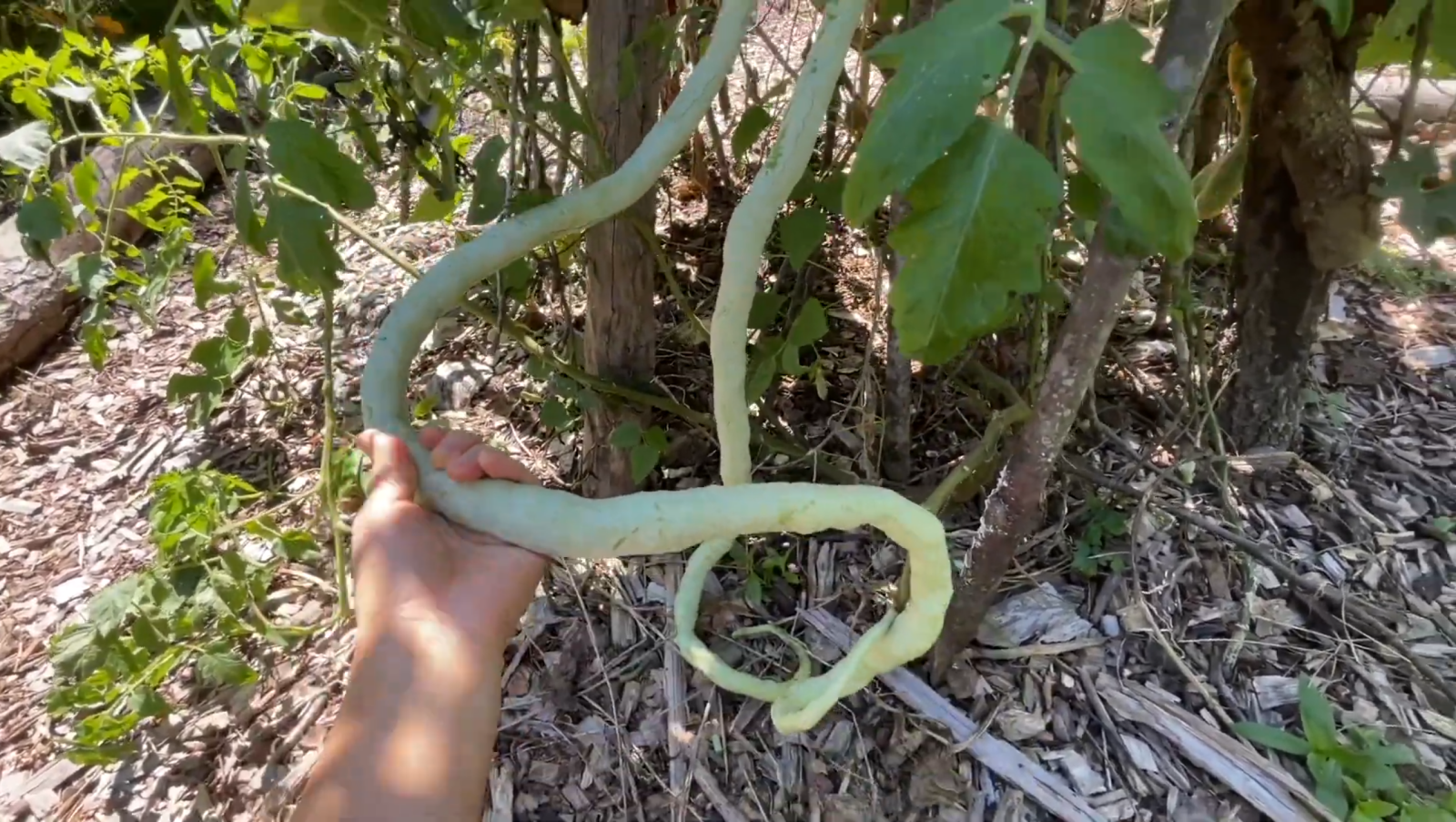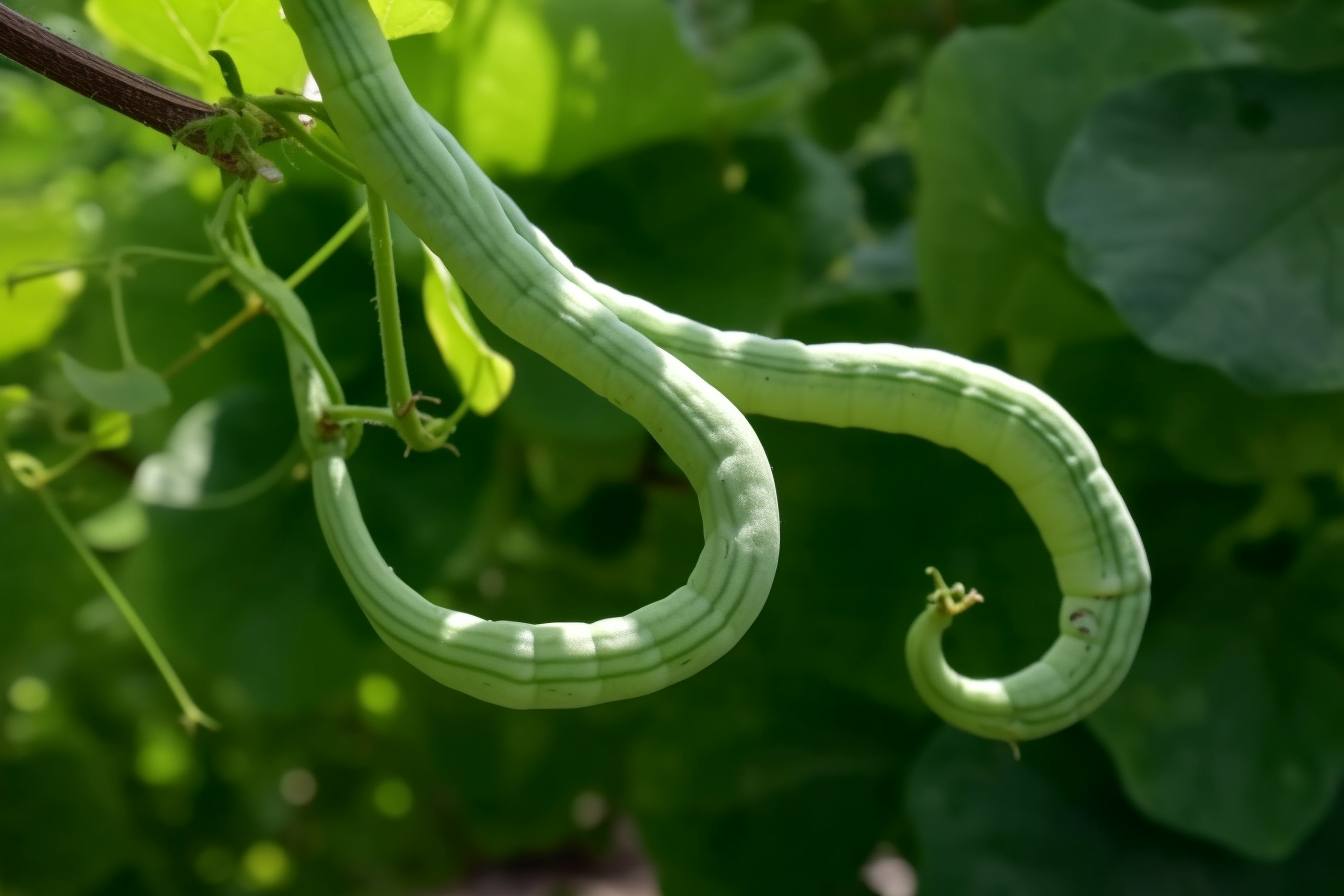The Indian Python Snake Bean, also known as Chinese Python Snake Bean, is a plant originating from Southern India. Recently it has garnered attention as a potential food security crop. This bean plant grows in various climates and regions, from Southern China to Northern Africa.
Table of Contents
ToggleCharacteristics of the Indian Python Snake Bean
The Indian Python Snake Bean has several distinct features that make it a unique and interesting plant. Here are some key characteristics of this bean plant:
- Prefers heat but struggles in extreme hot weather: While the Indian Python Snake Bean is known to thrive in warm climates, it has been observed to have difficulty during extremely hot weather conditions. This might affect its growth and productivity in areas with intense summer heat.
- Pollinated primarily by nocturnal moths: Unlike many other plants, the Indian Python Snake Bean relies on nocturnal moths for pollination. This could impact its growth and fruit production in certain climates where these pollinators are not active or abundant.
- Distinct appearance with patterned beans and uniform-colored beans: The beans of this plant come in two different appearances, some with patterns resembling a python snake and others with a more uniform color. This unique look adds to the plant’s appeal and makes it a visually interesting addition to any garden.
- Offers multiple food yields: The Indian Python Snake Bean is a versatile plant that provides different food yields depending on the stage of harvest. This makes it a valuable crop for both culinary and food security purposes.
Growing the Indian Python Snake Bean
Growing the Python Snake Bean can be a rewarding experience, providing an abundant and versatile food source. Here are some tips to help ensure successful germination and growth of this plant:
Germination Tips
- Scarify the seeds: The seeds of the Indian Python Snake Bean have a hard outer casing that can impede germination. To improve germination rates, gently rub the seeds with sandpaper, Emory cloth, or a similar abrasive material to create small scratches on the seed surface. This process, known as scarification, will help the seeds absorb water more effectively and encourage germination.
- Soak seeds overnight in water: After scarifying the seeds, it is recommended to soak them overnight in water. This will further soften the outer casing and provide the seeds with the moisture they need to begin germinating. The combination of scarification and soaking can significantly improve the germination rate of this plant.

Possible Yields of the Python Snake Bean
The Indian Python Snake Bean is a highly productive plant that offers various food yields at different stages of growth. Below is a table outlining the possible yields and their uses in the kitchen.
| Harvest Stage | Yield | Use |
|---|---|---|
| Young | Beans | Stir-fried, used like green beans |
| Mature | Seeds and red pulp | Seeds: food source; Red pulp: like tomato paste |
Culinary Uses and Taste
The Indian Python Snake Bean is known for its versatility in the kitchen and its unique taste profile. Here are some insights into the culinary uses and flavor of this remarkable plant:
- Young Beans: When harvested at a young stage, the beans can be stir-fried and used like green beans. They offer a taste akin to a mix of green beans and zucchini squash, with a slightly more robust flavor than zucchini.
- Mature Beans: As the beans grow larger, they can be harvested for their seeds, which can be used as a food source. The seeds are encased in a red pulp, which can be used similarly to tomato paste in various recipes.
There are numerous ways to enjoy the Indian Python Snake Bean, whether you prefer them young, mature, or even pickled, as some have tried.
Potential Challenges and Solutions for Growing Indian Python Snake Beans
Although the Indian Python Snake Bean can be a highly productive and valuable crop, it may face certain challenges during cultivation. Here are some potential issues and solutions for growing this plant:
Heat Stress and Drought Impact
- Problem: The Indian Python Snake Bean is known to prefer heat but can struggle in extreme hot weather, which may affect its growth and productivity. Additionally, drought can impact the activity of the plant’s nocturnal moth pollinators.
- Solution: To address these challenges, consider planting the Indian Python Snake Bean during a different time of the year, such as the fall, to avoid extreme heat. Also, ensure that the plant receives adequate irrigation to help it thrive during dry periods.
Pest Pressure
- Problem: While the Indian Python Snake Bean does not typically attract many pests, some animals, such as geese, might damage the vines.
- Solution: To protect the plant from potential damage, install protective fencing or barriers around the garden area. This will help deter animals and prevent them from causing harm to the plant.
In Conclusion
The Indian Python Snake Bean is a versatile and valuable food security plant that offers multiple food yields at different stages of growth. Its unique appearance, taste, and culinary uses make it an excellent addition to any garden. By following the germination and cultivation tips outlined in this article, you can successfully grow this plant and enjoy its various benefits in your home garden. Don’t forget to explore the world of food security crops from around the globe and continue to diversify your garden for a more sustainable and self-reliant lifestyle.









